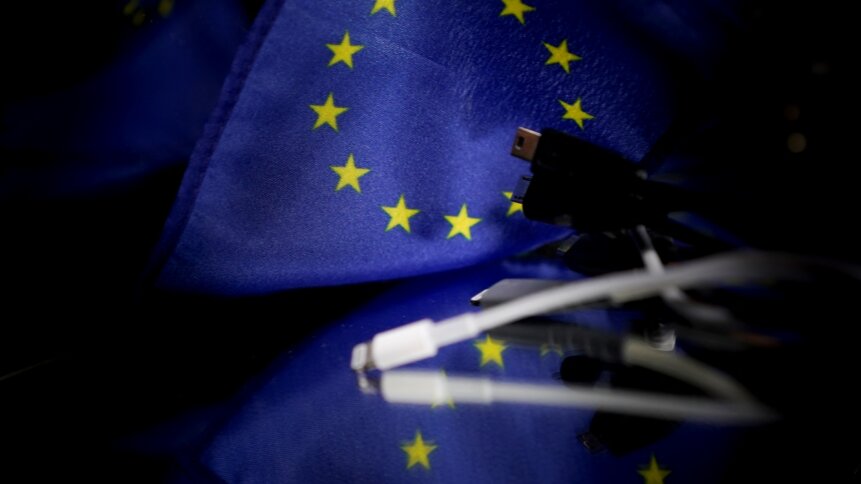For the greener good, the European Commission wants one charger to charge ’em all

- The European Commission is proposing that all devices use USB-C as a standardized charging port, to reduce e-waste
- Newer models from device makers like Samsung, Huawei, and others are built with USB-C ports, but older models still use micro USB-B ports
- Apple has already implemented USB-C ports in its new devices but still prefers Lightning connectors
The European Commission (EC), the executive arm of the European Union (EU) wants everyone to use the same mobile device charger. With mobile devices increasing globally, the number of chargers is increasing as well. While some mobile phone brands like Samsung and Apple have decided to not include phone charges in their new models, the reality is different phone brands have different charging ports.
Statistics show that there are 7.1 billion mobile phone users in 2021. That’s approximately 7.1 billion chargers as well for those devices. This figure does not include other devices like tablets, laptops, and such that also have chargers. In fact, the EU alone had 420 million mobile devices sold last year and the average person owns about three mobile device charges.
In order to sustain the environment by cutting waste and making it easier for consumers as well, the EC has proposed a new law that requires smartphone manufacturers to equip their devices with a standard USB-C charging port. The ruling is also meant for other electronic makers as well.
The BBC reports that the commission’s research estimates that there are more than 11,000 tonnes of waste from disposed and unused charging cables per year.
The USB-C is an industry-standard connector that can be used for both transmitting data and power on a single cable. Developed several years ago, USB-C is now the preferred charging port offered by most global mobile phone companies.
While Samsung and Huawei have been advocating USB-C ports on their devices, Apple has only recently accepted the fact that their devices should be using USB-C ports as well. Laptop manufacturers like Dell, HP, and Lenovo have also built on USB-C ports on their devices and now even offer models that can be charged with a USB-C charger.
According to a statement by Margrethe Vestager, European Commission Executive Vice President, European consumers have been frustrated long enough about incompatible chargers piling up in their homes.
“We gave industry plenty of time to come up with their own solutions, now time is ripe for legislative action for a common charger. This is an important win for our consumers and environment and in line with our green and digital ambitions,” said Vestager.
The European Parliament had initially voted in favor of a common charger last year and if the proposal does become law, device makers have about two years to comply with the new legislation.

(Photo by Michael Kappeler / POOL / AFP)
European Commission saddles device makers with charging dilemma
Unfortunately, this may create a problem for device makers. While all of them are in favor of a universal charger and sustaining the environment, the concern is what is going to happen to the older devices that do not have USB-C charging ports. In 2009, there were more than 30 different charger models, but nowadays most models stick to the ‘universal three’ of USB-C, Lightning, and USB micro-B.
A majority of devices in the world today, be it mobile phones, laptops or tablets utilize a variety of charging cables. For example, older Apple iPhones and MacBooks use Lightning cables while older Samsung, Huawei, and other mobile (mostly Android operating system-based) phone brands use micro-USB-B chargers. Laptops may be able to rely on a variety of charges, depending on the manufacturers.
As much as Apple would like to keep its Lightning charging capabilities within its closed ecosystem of devices, the reality is that having a universal charger will offer heretofore unparalleled convenience to users. It also means that users can reuse their chargers for all their devices, drastically slashing the amount of electrical waste, and not having to worry about having to purchase device-native chargers only, whenever their chargers have issues.
The question now is, how will this affect device makers’ strategies in developing future models? With battery and charging capabilities continuing to see improvements and faster-charging speeds, device makers would now have to work on developing devices that utilize the USB-C port. The standardization of hardware chargers in the EU could also set the precedence for future charging capabilities of other devices as well. For example, most electric vehicles already have compatible charging capabilities depending on the region they are operating in.
At the same time, the move by the EU may also see other nations follow suit if they intend to push reducing e-waste output to the top of the carbon-neutral agendas. While it’s uncertain if the US will impose such a ruling in the future, Asia should definitely be studying how this can be practically implemented there as well, especially with the region possessing the highest concentration of devices globally.










